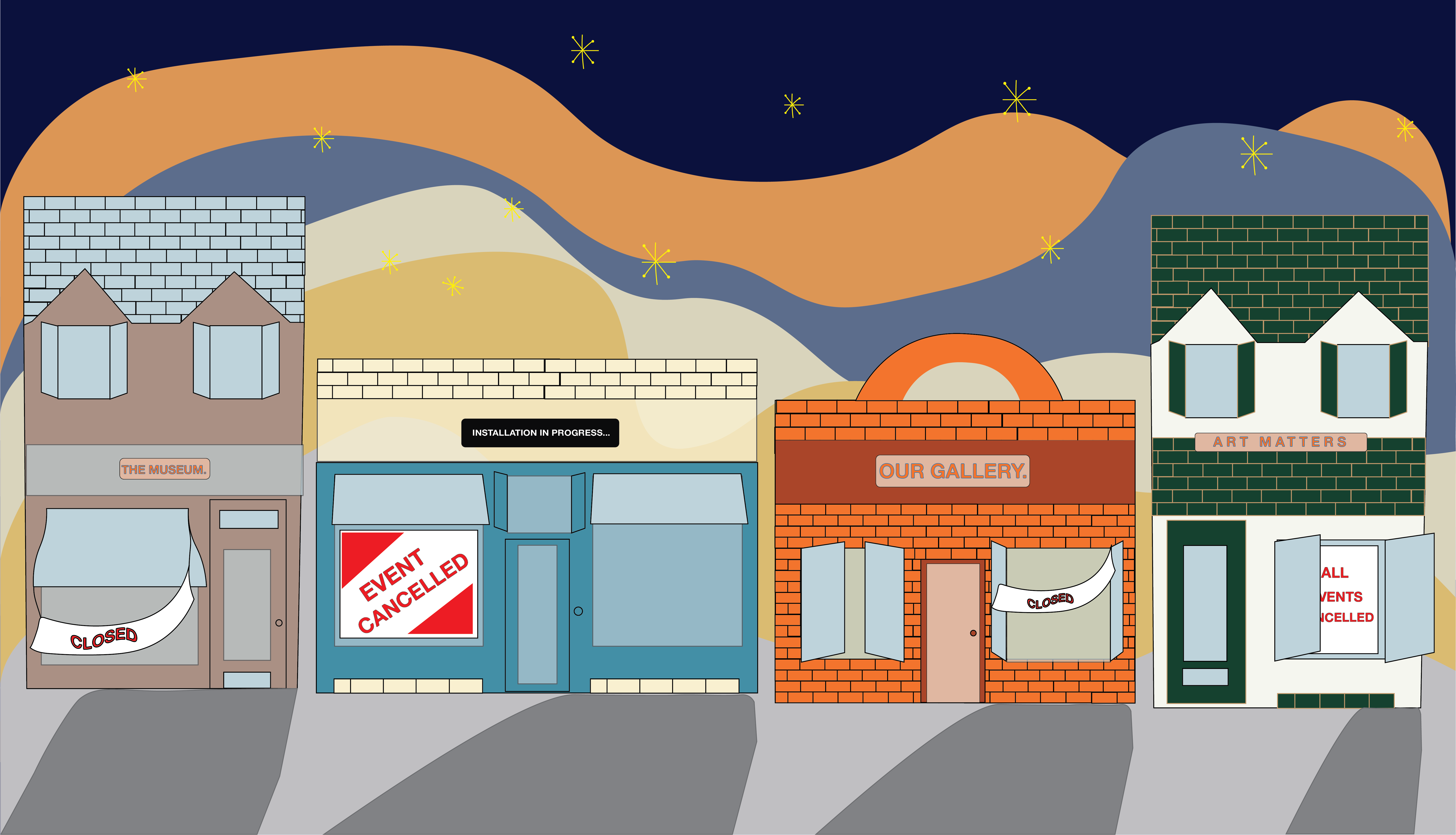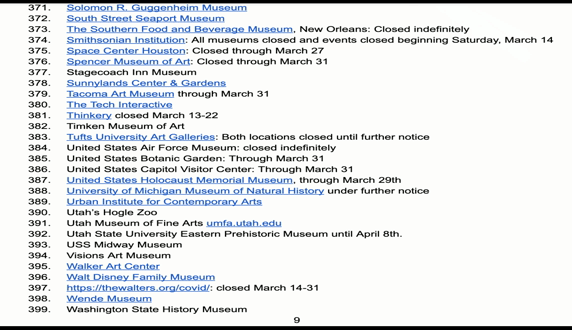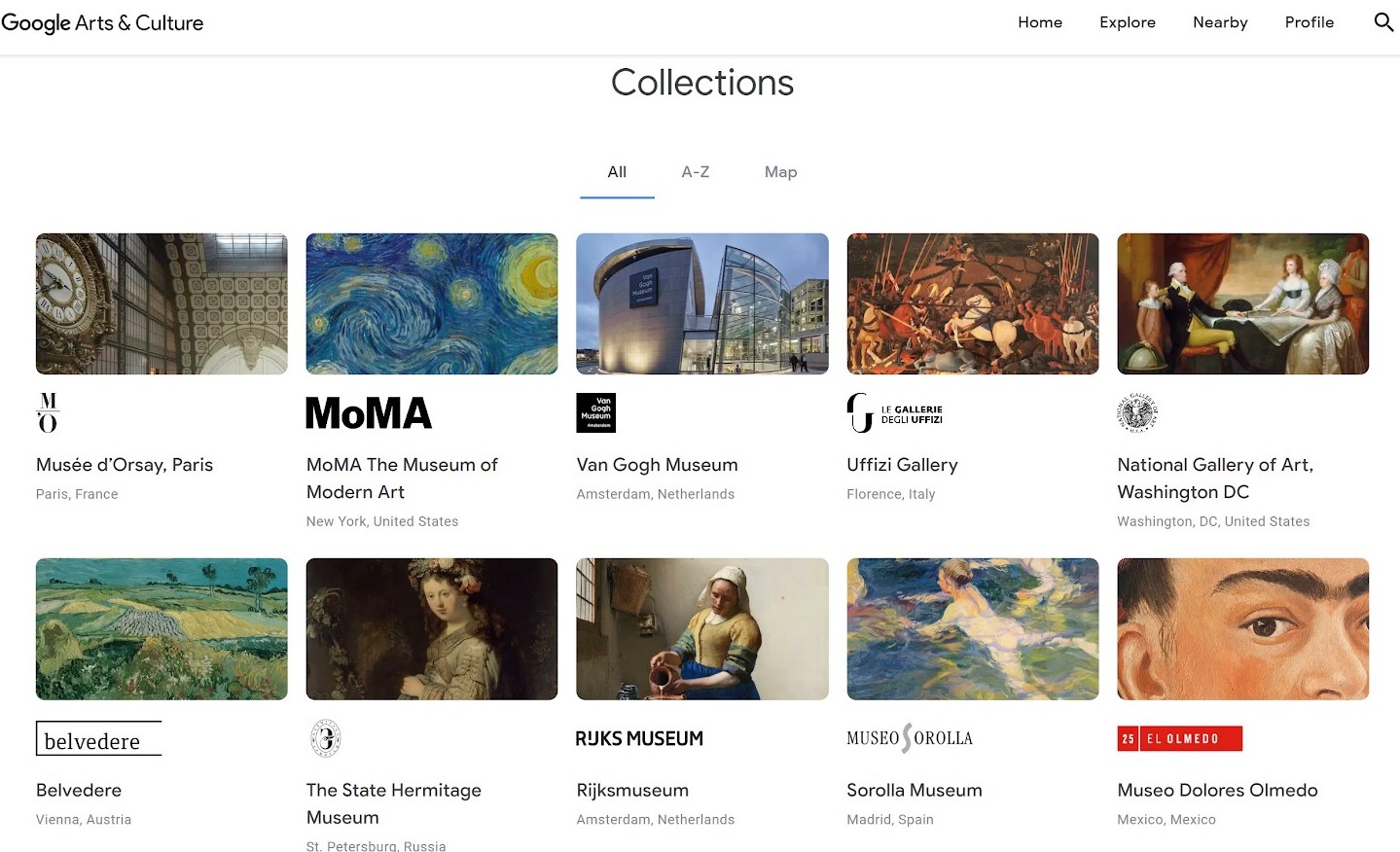What impact will museum closures have on the art world?
Museums are places we go to learn, engage and explore. They are responsive and have the power to host a dynamic conversation with contemporary society. After the awakening from their somnolence through the 20th century, (most) museums are now self-conscious and mindful, acting as reflexive civil organizations. Alongside art fairs and biennials, the art world relies on the works presented at these institutions to determine the themes and artists of the next year’s cultural programming.
In light of the COVID-19 global pandemic, much of the world has ground to a sudden halt, due to social distancing to slow the spread of the virus. Art events were some of the first things to be affected by government recommendations to limit social gatherings, and museums swiftly followed suit, with a variety of responses.
Government warnings have issued different plans of action for museums around the world, either ordering them to close or leaving the message vague on whether shutting down is necessary. Int he UK, Geraldine Adams of the Museum Association noted, “some culture professionals are calling on institutions that remain open to take matters into their own hands and close immediately to protect public health,” even though many governments around the world are not calling on them to do so.
Globally, the list of museum closures and event postponement is extensive. Many are closing for a minimum of two weeks, some indefinitely. There are too many to name here, so visit the artnet news website or this Google doc for the full list.
Annual art festivals are the most affected. They invite a global audience into one space, boost the tourism sector, the economy, and the veneration of ideas and artists. Postponements to cultural events include the Venice Biennale, which has cut three months of its programming, Art Basel’s Swiss Fair (after cancelling Art Basel Hong Kong) and Frieze New York, which has fully cancelled its summer 2020 programming.
In Montreal, all major museums have closed. To name a few, the Montreal Museum of Fine Arts, the Musée d’art contemporain de Montréal, the Pointe-à-Callière Montréal Archaeology and History Complex will all be closed until March 30. The Canadian Centre for Architecture has closed until further notice, the Montreal Holocaust Museum will be closed until April 17, and The McCord Museum has closed for a minimum of two weeks.
Economic and labour effects
As much as it pains us all to admit it, cultural institutions do not run purely on the exchange of knowledge. Museums are able to function based on government funding, private investment or ticket sales. They act as major employers and nodes of economic exchange. Most public institutions will continue to receive government funding during this time, but what about the independent organizations, where revenue from visitation helps keep them afloat? There have been calls by the Museum Association to redirect funds from cancelled festivals and events across the world to help bail out museums in need.
This is affecting the already underpaid employees of many in the cultural field. The Los Angeles Times reported that many museums across the US have not laid off part-time and hourly staff, and planned to pay them until April 1—but after that, regular employment is uncertain, as they cannot know how the situation will develop. Many museums are using this opportunity to ask staff to aid in the development of new engagement techniques and online resources, rather than leaving all the work to the salaried employees, which could potentially restructure the archaic organizational hierarchies entrenched in many business models.
The New York Times reported that the Metropolitan Museum of Art in New York is “reallocating discretionary resources usually used for acquisitions and programming toward operating expenses, fund-raising from foundations and donors and pursuing government assistance” to help mitigate the long-term financial impacts of COVID-19. As one of the most influential museums in the US, and arguably the world, it is thought that this will set the precedent for many other institutions, but this raises the question, what will happen with the artwork shown in the museums? Will there be fewer exhibitions, educational resources, and artists presented?
New initiatives
Many museums have been using this weird moment to get creative with how they engage their audiences on social media. The Museum From Home hashtag on Instagram and Twitter shows highlights from gallery collections to create a pseudo-archive of the moment. Also, one of the trends that have been keeping me sane throughout the pandemic is the Museum Moment of Zen hashtag on Twitter. From cats to Monet paintings, many museums and galleries have been partaking in this wholesome hashtag. I, for one, can finally say that I have seen one of Yayoi Kusama’s Infinity Mirrored Room because of it, as the Broad Museum live-streamed the exhibit on their Instagram.
Some larger museums have, over the past few years, utilized new technology to provide virtual tours that are more important than ever in light of the COVID-19 pandemic. Over 500 institutions teamed up with Google Arts & Culture to open their doors to the internet community, providing a museum-going experience from the comfort of your home. Canada also runs a national Virtual Museum shared by museums and cultural heritage organizations. Smaller initiatives, like the Social Distance Gallery (@socialdistancegallery), have taken to Instagram to make sure student thesis shows are not lost in the transition to digitization.
The Canadian Centre for Architecture (CCA) posed the question last year, “is a database a museum?” With the digitization of all mediums of information, we could argue yes, so the learning aspects of museum-going may not be lost. However, the one-off educational workshops and experiential learning aspects cannot be excluded from the conversation and will take efforts on all ends to reach its potential.
It is not all bleak; more than 180 museums in China reopened this week after extended closures. According to Artnet, they have strict health measures in place, with most requiring visitors to submit their health code—a mandatory metric of tracking a person’s risk level. The museums are limiting the number of visitors, and some, including the Power Station of Art in Shanghai, have emergency quarantine areas set up on each floor.
But how can museums act as lighthouses for the current dystopian play we find ourselves in?
Museums should be working with the complex societal paradoxes we find ourselves in to make them accessible and digestible for a wide audience. Although this has mostly been done with a predominantly white eurocentric bias until the 21st century, the COVID-19 outbreak could be an opportunity to plan exhibits that reflect on the government, social, and economic inadequacies exposed by the global pandemic. From the necessity of universal basic income to drinking water issues in Indigenous communities to inept health care systems, this could be the time for mass institutional change and reflexivity in what they show and the ways they do so.
As Eunice Bélidor, a Montreal-based curator, critic and researcher, states in her latest curatorial tip; “In this moment of COVID-19 crisis, where access to cultural and art institutions are forbidden, curators have to find alternatives to a) keep presenting exhibitions b) pay artists. One of the best ways out there is to present online exhibitions, which currently are the only thing we have access to.”
There is light at the end of the tunnel; accessibility, new media and more creativity in museum engagement, so stay inside and happy viewing. Share your digital art experience with us on Twitter, Instagram and Facebook at @TheConcordian.
Feature graphic by Sasha Axenova, Museum Cancellations gif by Chloë Lalonde and screenshot from Google Arts and Culture.






